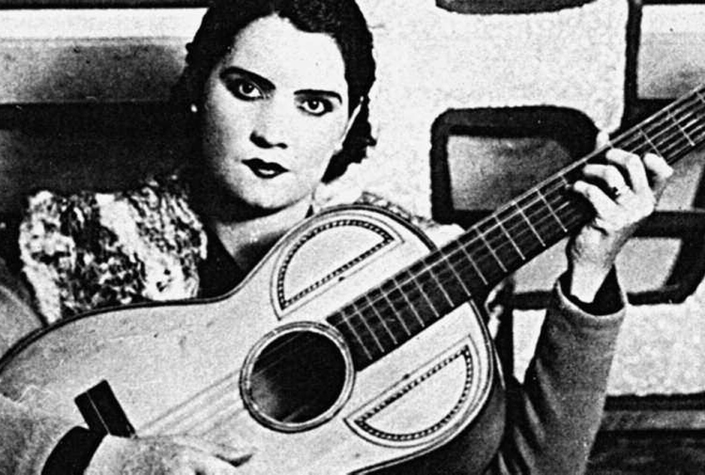CHULAS FRONTERAS
USA 1976 | 58 Min. | 16 mm, OF
The music of the Rio Grande-Valley - some call it Conjunto others Tex-Mex or Música Norteña – is a strong energetic music, based primarily on the accordion and the driving bass of the bajo sexto a huge 12-string guitar. Blank searches for the political undertones of this music in interviews with farmworkers and discjockeys thus showing its importance in the every-day life of the people. The lyrics and dialogues together define the Texas Chicano in both geographic and emotional terms: an individual who calls Texas home but is caught between two worlds, between old and new traditions.
»Norteño, usually called Conjunto or Tex-Mex music on the American side of the border, has evolved since the early 1900s into the last Mexican regional style and perhaps the most influential and uniquely Mexican-American tradition. Today, as one of the main roots of Tejano Music, Norteño/Conjunto is immediately recognizable by the accordion as the lead instrument accompanying traditional Mexican duet singing. The diatonic, button accordion, first developed and mass-produced in Germany in the middle of the 19th century, made its appearance in the Texas-Mexican border region before the turn of the century. The instrument was well distributed in the northeast of Mexico and in south Texas, due to the large influx of central Europeans in that region. The rugged little black box quickly became popular, especially with rural musicians and dancers. In addition, the usual conjunto norteño also includes a bajo sexto (solidly built 12-string guitar), a contra-bajo or string bass (today usually an electric one), drums, and sometimes an alto saxophone. As it has been for almost a century, Música Norteña is still widely popular, especially among agricultural and blue collar workers. The music represents a cultural treasure trove with its great variety of rural dances such as the polka, waltz, redova, mazurka, huapango, schotish, cumbia, danzón etc. It also offers a huge repertoire of songs and types, ranging from rancheras to boleros, to a surprising number of often powerful protest ballads (story songs) known as Corridos or Tragedias (…) Today’s Tejano Music embraces plenty of grupos, solo singers, trios, mariachis, bandas, string ensembles, as well as a great variety of orchestras, some or all of which incorporate elements of Norteño, the mother tradition (…).« (Chris Strachwitz, 1995)



